Fix: PowerPoint Found a Problem with Content
Several Windows users are reporting that their Powerpoint application is showing the “PowerPoint found a problem with content” error with some or all presentations on their computer. This issue is only reported to occur with .pptx files and is confirmed to appear on Windows 7, Windows 8.1 and Windows 10.

What is causing the “PowerPoint found a problem with content” issue?
We investigated this particular issue by looking at various user reports and the repair strategies that were successfully used to resolve this problem. Based on our investigations, it seems like there are multiple potential culprits that might end up triggering this particular error message:
- Protected Views is enabled – If Protected Views is enabled inside your Trust Center settings, the program will reject any files that were downloaded from Outlook attachment or from a direct URL. In this case, you will be able to resolve the issue by disabling protected views settings from Outlook.
- Location of the file is not added to Trust List – If the folder that is hosting the .pptx file is not added to the Trust List in Outlook, you might receive this particular error message. In this case, you can resolve the issue by adding the folder to the Trust List in Outlook.
- The file is located in a synchronized folder – If the file you’re trying to open is located in a synchronized folder like OneDrive or Dropbox or the folder is overseen by backup software, you might also encounter this particular issue.
- The file is blocked – With .pptx file downloaded over the internet, you might get this error message if your OS decided to block the file. If this scenario is applicable, you can resolve the issue by accessing the Properties screen and unblocking the files.
If you’re currently struggling to resolve this error message, we have prepared a collection of potential repair strategies that other users in a similar situation have successfully used to resolve the same error message.
Down below, you’ll find a collection of methods that are confirmed to work by at least several affected users. To remain as efficient as possible, we advise you to follow the methods in the order that they are presented since they are ordered by efficiency and simplicity. One of them is bound to resolve the issue regardless of which scenario is applicable to your situation.
Method 1: Disabling Protected Views
As it turns out, the most common culprit that will cause the “PowerPoint found a problem with content” error are several Trust Center settings that will make the program reject Outlook Attachments or files located in potentially unsafe locations or files originating from the Internet.
So if you received the presentation via email or you’ve downloaded it over the internet, chances are you will receive this error message before you take the necessary steps to disable protected views. Here’s a quick guide on how to do this:
- Open Outlook and click on File from the ribbon bar at the top of the screen.
- Then, from the File menu, click on Options at the bottom of the vertical menu in the left-hand side.
- Once you’re inside the PowerPoint Options menu, select Trust Center from the left-hand side pane.
- Inside the Trust Center menu, move over to the right-hand pane and click on Trust Center Settings.
- From the Trust Center menu, select Protected Views from the left-hand pane. Then, move over to the right pane and uncheck every box associated with every Protected View condition.
- Click Ok to save the changes.
- Once the change has been enforced, restart your PowerPoint application and open the presentation that was previously triggering the “PowerPoint found a problem with content” error.
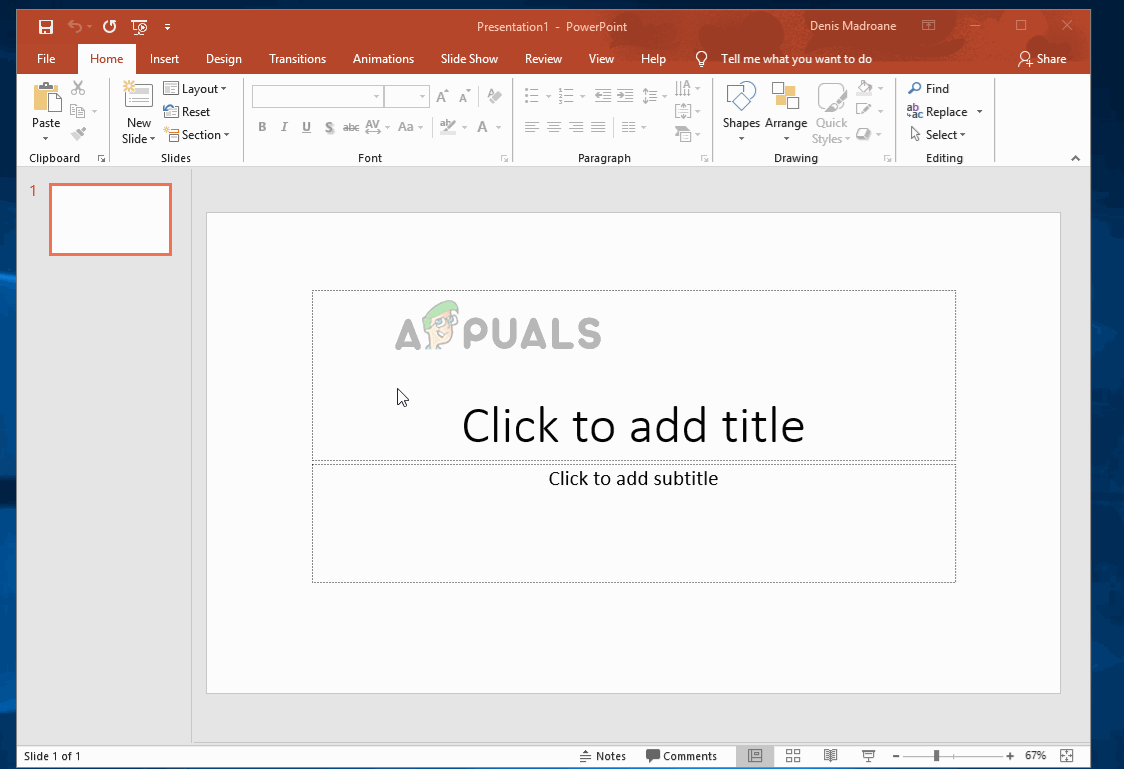
If the issue is still occurring, or you’re looking for a method that won’t leave your system vulnerable to exploits, move down to the next method below.
Method 2: Adding the location of the file to the trust list
If the PowerPoint file was obtained externally (via email, direct download or retrieved via USB stick), chances are PowerPoint will not let you open it if it’s stored in a location that is not considered secure. If this scenario is applicable to your current situation, you will be able to unblock access to the file by adding the document location to your PowerPoint trusted list.
Although this procedure is preferable to Method 1 (where all Protected Views settings are effectively disabled), it can still turn out to become a breach in your security if ill-intentioned malware finds their way into the same folder.
Here’s a quick guide on adding a folder to the trusted PowerPoint locations:
- Open PowerPoint and click on File from the ribbon menu at the top of the screen.
- From the vertical menu, click on Options.
- Next, from the PowerPoint Options menu, click on Trust Center from the vertical menu. Then, move over to the right-hand menu and click on Trust Center Settings.
- From the Trust Center menu, select Trusted Locations from the vertical menu of the left. Then, move over to the right menu and click on Add new location.
- From the Microsoft Office Trusted Location window, click on Browse and navigate to the location where you have stored the file that is refusing to open. Then, click Ok to add the new trusted location.
Note: If you have the file stored in a generic folder (such as Downloads), it’s best to create a separate directory and move the file there first. - Restart your PowerPoint application and see if the issue has been resolved.
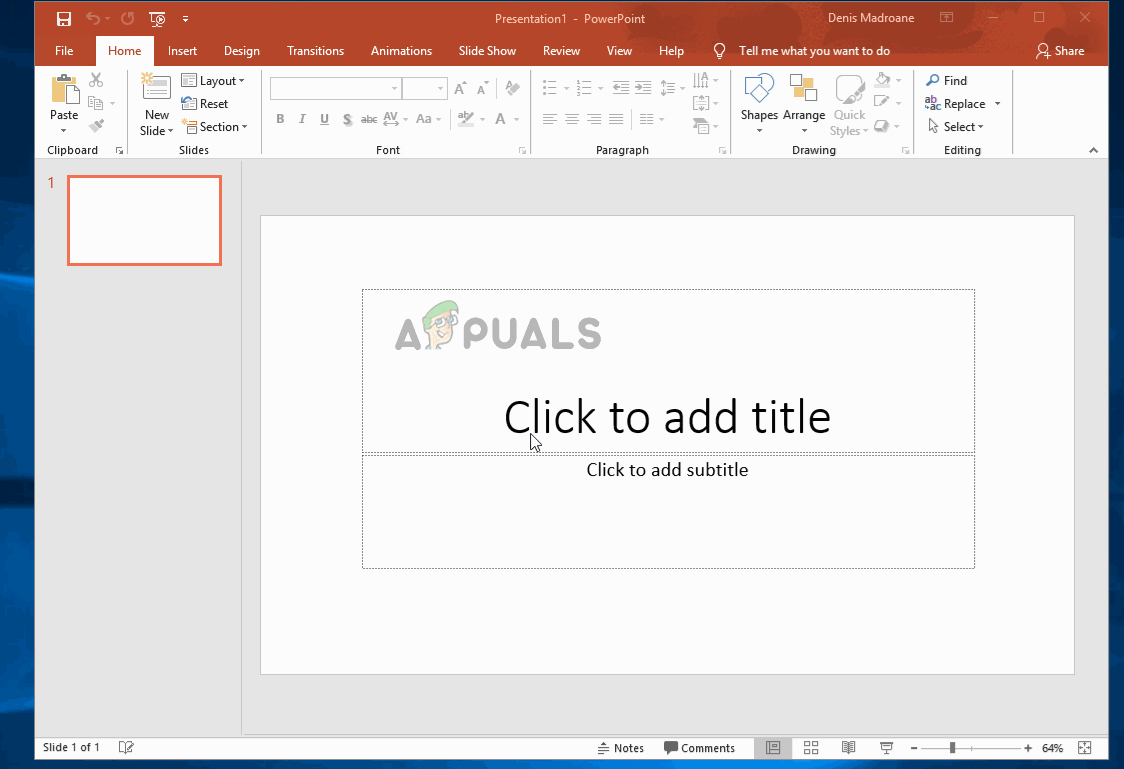
If the “PowerPoint found a problem with content” error is still occurring, move down to the next method below.
Method 3: Moving the file out from the synchronized folder
If you’re trying to open a file located inside the Dropbox folder or OneDrive folder, you will need to move the file into a folder that isn’t affected by synchronization or other backup software. Several affected users have reported that the issue was resolved after they moved the file from the synchronized folder to a regular directory.
Here’s a quick guide on how to do this:
- Navigate to the synchronized directory where you currently have stored the file.
- Right-click on the file and select Cut. Or press Ctrl + X.
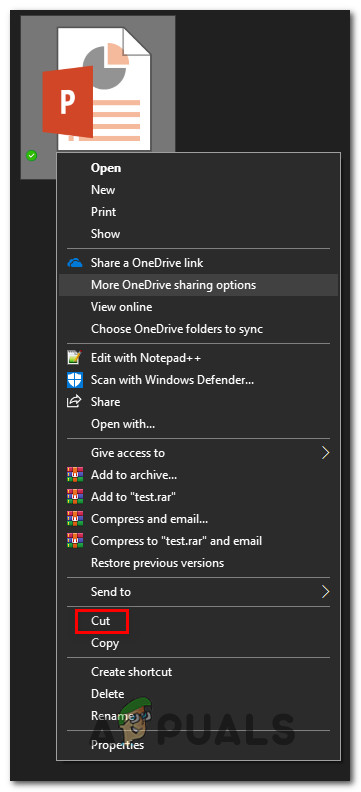
Moving the file from the synchronized directory - Navigate to a regular directory and right-click somewhere on an empty space. Alternatively, you can press Ctrl + V.

Moving the file to a synchronized location - Open the file with your PowerPoint application again and see if the issue has been resolved.
If you’re still encountering the “PowerPoint found a problem with content” error, move down to the next method below.
Method 4: Unblocking the File
If the file you’re encountering the issue on was downloaded from the internet, chances are your operating system decided to block your file from being modified. Several affected users have reported that the “PowerPoint found a problem with content” issue stopped occurring after they unblocked the file.
Here’s a quick guide on unblocking the file:
- Right-click on the file .pptx file that you’re having issues with and choose Properties.
- Inside the Properties screen of your file, go to the General tab and click on the Unblock button.
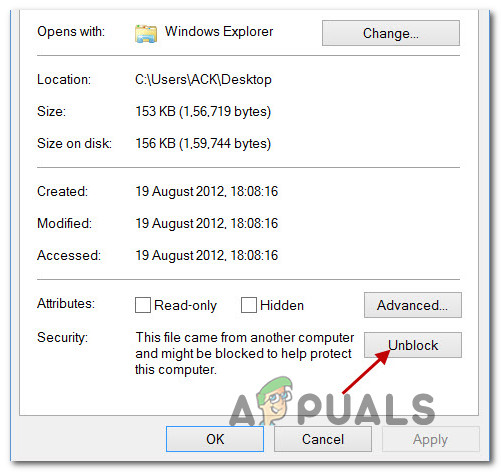
Unblocking the file - Click Apply to save the changes.
- Open the .pptx file and see if the issue has been resolved.
Method 5: Deleting Folder in Mac
In some cases, certain files might get corrupted which gets in the way of launching the content. Therefore, in this step, we will be deleting a particular folder in Mac to fix this problem. In order to do that:
- In Finder, press COMMAND +Shift+g.
- In the window that opens, enter ~/Library and then click Go.
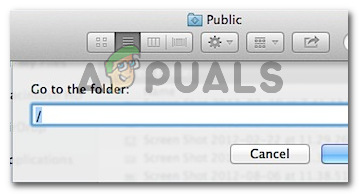
Typing the address in Finder - Scroll to look for the folder “com.microsoft.powerpoint”.
- Delete the folder named “com.microsoft.powerpoint” and restart PowerPoint.
- Check to see if the issue persists.





